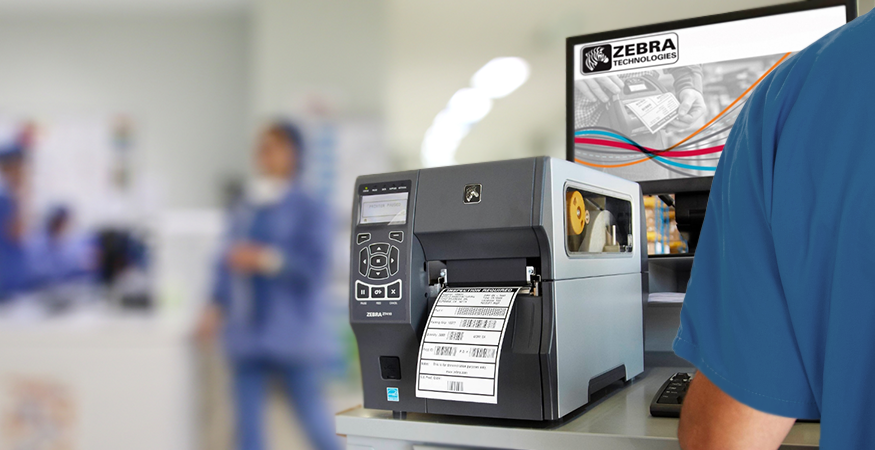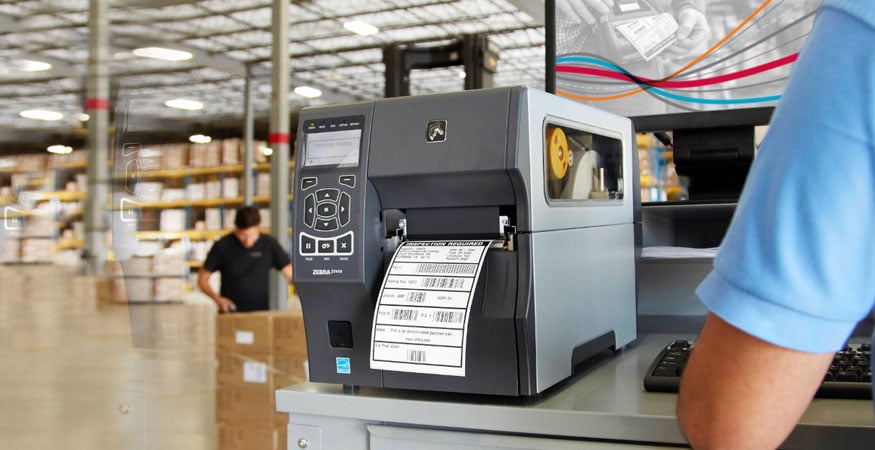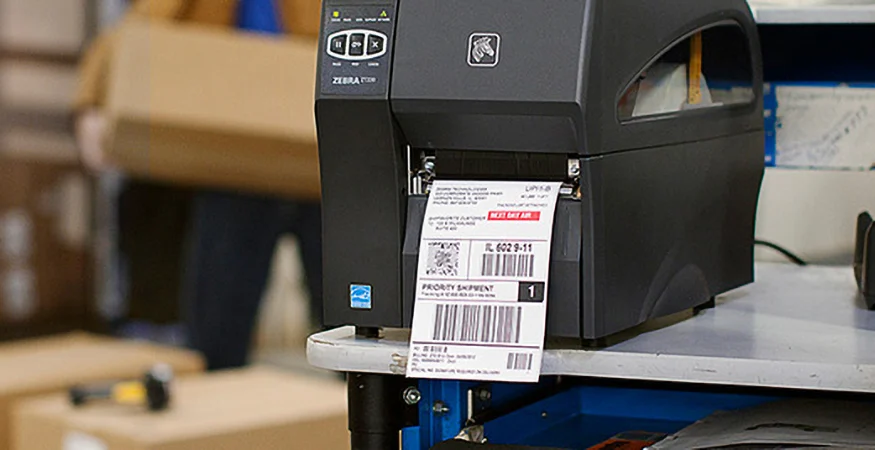It’s easy to think of major technology advances in the healthcare industry like imaging devices, patient monitors or even Electronic Health Record (EHR) software.
And then comes along the lowly printer. Or is it?
Thermal printers, in particular, are an essential tool for healthcare professionals who want to improve accuracy and reduce costs. Learn more about the benefits of thermal printers, how they work and how they can be used in healthcare settings.
What is a Thermal Printer?
What sets a thermal printer apart from a regular desktop printer? Unlike inkjet printers, thermal printers have a printhead that is heated to produce images. Most models print in one or two colors and use different media than desktop printers in varying sizes. You can select from two basic types: direct thermal and thermal transfer.
Direct Thermal Printing
Direct thermal printing uses heat-sensitive labels or paper that are chemically treated. When they pass under the thermal printhead, the intended image turns black. The easiest example is a common store receipt. Direct thermal printing isn’t as durable and can fade over time because label materials are heat sensitive. Therefore, they are ideal for short-term applications.
Applications: Receipts, barcodes on shipping labels, perishable goods, tickets, general use labels, etc.
Thermal Transfer Printing
Thermal transfer printing uses a heated ribbon to produce images on various materials. Thermal transfer printing is much more durable than direct thermal printing and can be used for long-term applications for six months or more. It can withstand chemicals, UV rays, high temperatures or water.
Applications: Patient wristbands, medication labels, laboratory specimens, IV bags, outdoor labels, permanent identification, freezer storage, high-use items (carts, devices, signage, etc.)
Benefits of Thermal Printers in Healthcare
Overall, there are many reasons to use thermal printers in hospitals, clinics, doctors’ offices, emergency departments and other areas of a healthcare facility due to their unique benefits.
Multiple Media
Most desktop inkjet or laser printers aren’t conducive to a variety of media or simply aren’t engineered to print small items like wristbands, laminated labels or on synthetic materials like plastic and polyester. Thermal printers are ideal for:
- Wristbands
Available in sizes from neonatal to bariatric, a wristband can be printed on directly using a thermal printer, meaning healthcare workers don’t need to spend extra time assembling wristbands or affixing labels. You can print a single wristband or multiple items at a time depending on the need. Thermal transfer printing is recommended due to its durability.
- Labels
Unlike a desktop printer that requires printing an entire sheet of labels, thermal printers allow you to print one at a time for patient identification, charts, medication, laboratory samples, IV bags, visitor passes and more.
Compact Size
Most thermal printers are very compact and won’t take up valuable workspace at admissions desks, nurses stations, pharmacy counters and elsewhere. Some units are even wearable. Their compact size also means that storage space for supplies is minimal.
Cost
Desktop thermal printers don’t come with all the bells and whistles that some other printers do, making for an economical solution. However, they may cost slightly more than cheap inkjet or laser printers up front. Total cost of ownership over time typically evens things out because thermal printers do not require expensive toner cartridges. You’ll typically spend less on rolls of labels, too, since you’re not wasting an entire sheet to print just one label.
There’s also something to be said about efficiency gains from swapping out label rolls or wristbands and refilling paper trays. Many healthcare facilities have several thermal printers dedicated to printing wristbands or labels, meaning they rarely have to deal with finding the right medium and swapping out paper.
Crisp Images
Thermal printers can print small details with impressive clarity and crisp lines, such as is necessary for barcodes, patient data, prescription labels, lab specimens and other information.
Accuracy
Another benefit of crisp and clear patient identification information is the significant reduction of errors. Thermal printers can also integrate with electronic medical records (EMR) systems to improve accuracy. Barcodes imprinted on wristbands and other patient materials are often used to validate patient information prior to administering medications, procedures or other care.
HIPAA Compliant
Protecting patient data is a major concern for healthcare professionals. In combination with other security best practices, encryption, label selection and point-of-care printing, thermal printers can help ensure HIPAA compliance.
Speed
In the fast-paced healthcare environment, every second counts, and less time spent printing means more time spent with patients. Thermal printers can print on demand and have faster print speeds than inkjet or laser printers.
Durability
Labels or wristbands printed with thermal printers are more durable than inkjet or laser-printed items. The use of synthetic materials like plastic wristbands or coated labels help protect against UV rays, cold, heat and liquids. In other words, they won’t smear or rub off easily. That said, they may fade if exposed to direct sunlight or heat over long periods of time. It’s best to keep thermal printed items at room temperature and in a dark area when storing.
Easy Maintenance
Because of their simple design and absence of printer ribbons and toner, the printheads don’t build up with residue over time. They’re easily cleaned, helping to minimize repair and maintenance costs.
Healthcare agencies are driven by a passion to provide top-level care. Technology, both big and small, has been a driving force in minimizing errors and improving outcomes. The same is true for thermal printers and their ability to provide quick accurate, durable and cost-effective labels and wristbands.
There are numerous types of thermal printers for various applications, but knowing which ones are right for your healthcare facility doesn’t need to be confusing. Contact Gordon Flesch Company today for a complimentary print needs assessment to help determine the best solutions. Simply click the link below.










